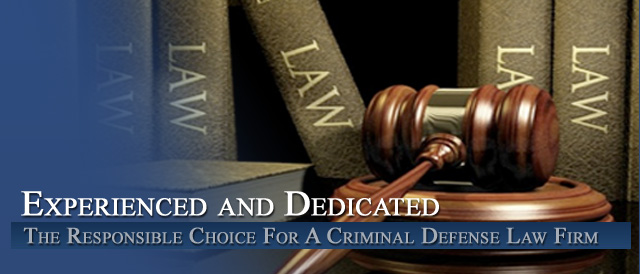




Understanding and How To Win a Permanent Restraining Order Hearing in Colorado – Part II
Fighting False Restraining Orders in Colorado – How to Win A Permanent Protection or “Return” Order Hearing in Colorado – Part II*
By Colorado Criminal Defense Lawyer – H. Michael Steinberg
Colorado Cases False Allegations of Abuse -Consequences of Domestic Abuse Claims
Allegations of domestic abuse may have both civil and criminal consequences. In the civil context, an allegation of abuse may result in domestic abuse restraining orders, often called “Protective Orders.” They may also have a criminal context related to assault or battery.
The significance of a judicial finding that domestic abuse has occurred is profound. In the context of criminal cases, incarceration or fines may be imposed and “no contact” orders entered which may include requiring the perpetrator to vacate the family residence or to have no contact between a parent and their children.
In the civil context, including divorce and custody proceedings, the consequences are equally severe:
• Presumption for Custody. Colorado Judges often rule that in the event domestic abuse has occurred, the perpetrator of that abuse should not be awarded physical placement or physical custody.
• No Mediation of Disputes. It is also often presumed that where domestic abuse has occurred, mediation for family law disputes should not be required.
• Restraints on Abusive Behavior. A domestic abuse restraining order will include a restraint precluding the defendant from committing any acts of domestic abuse against the victim.
• No Contact & Criminal Violation. Where domestic abuse has been found to occur, the Court will enter a restraining order prohibiting that person from contacting the victim directly or indirectly, whether through letters, e-mail, phone calls or messages through third parties. Any violation of those restraining provisions, regardless of whether the contact is initiated by the victim or not, is a criminal violation which may result in incarceration.
• Exclusive Use of Home. As a corollary to the no contact provisions of a domestic abuse restraining order, the defendant is also often excluded from the family residence including any property within that residence regardless of whether the residence or household is jointly or solely owned or leased by the parties. Often the order will make allowances for law enforcement officer to accompany a party to the residence to supervise the removal of limited personal belongings.
• Parenting Issues. A domestic abuse restraining order will often also restrict the defendant’s contact with children who may have been exposed to the domestic abuse. This may result in no parenting time or supervised parenting time.
• Anger Management and Treatment. The Court may also require a defendant to participate in an anger management program, chemical dependency treatment and other therapies as a condition of normalizing contact with his children.
• Restriction of Civil Liberties. Additionally, the entry of a domestic abuse restraining order may affect other civil liberties. For example, under the federal “Brady Bill” a perpetrator of domestic abuse is precluded from owning or possessing a firearm for any purpose.
Clearly, when false allegations of abuse are made, the stakes are very high. Ironically, this is contrasted by the low burden of proof necessary for those seeking civil restraining orders involving domestic abuse and the abbreviated manner in which such hearings are generally held.
Colorado Protective Orders, Burdens of Proof, and Court Procedure
In Colorado, the proponent that domestic abuse has occurred carries the burden of proving the claim by only a “preponderance of the evidence.” A “preponderance” simply means that the party must prove that it is more likely than not that the abuse occurred. This is the lowest legal standard of proof in the court system and a great deal of discretion is left to a trial court in determining whether that standard has been met.
All too often, Courts will issue a restraining order on extraordinarily weak evidence in order to err on the side of caution. After all, no Judge seeking reelection wants their picture splashed across the pages of the daily news trumpeting their failure to protect an abused person who is then later assaulted.
It is equally confusing that civil domestic abuse hearings are conducted with little time to prepare, particularly for a defendant, as well as in an abbreviated fashion to accommodate the court’s crowded docket. Whereas a person alleging domestic abuse may plan their case ahead, compiling documentation or manufacturing other evidence to support their claims, a defendant is often required to prepare a response to allegations of abuse in one or two weeks or less.
When an evidentiary hearing is held, the Court may often limit testimony and evidence to fit the case into its busy schedule, often affording the parties less than an hour or two to present the case. Since procedurally the defendant presents their case second, his time is often extraordinarily limited.
In most jurisdictions, an application for a domestic abuse restraining order will include seeking an ex parte emergency order followed later by more permanent order issued after a return hearing in court. In order for an ex parte restraining order to enter, a person (often assisted by a battered woman’s shelter, advocate or domestic abuse office) may file a Motion and Affidavit seeking ex parte relief.
Ex parte (only one side present) relief is emergency relief and the allegations considered by the court are one sided without and rebuttal by the person accused. Based on this one sided submission, the Court may issue a temporary restraining order that removes the defendant from the family home, precludes contact between the defendant and the victim and, often the children, and sets the matter for a court hearing in the near future, but often weeks away.
At the Permanent Restraining Orders or “Return” hearing, the parties are advised to bring their witnesses and evidence to address the issues of abuse raised by the ex parte petition. At this hearing, the Court in many jurisdictions will offer a defendant the following options:
• Agree to the Restraining Order with no findings that abuse has occurred;
• Proceed to an evidentiary hearing to Contest the Allegations.
The first option is often attractive given the low standards of proof that apply at domestic abuse hearings and the significant impact of a finding that abuse has occurred. Remember a finding that domestic abuse has occurred may create a presumption that the person should not be awarded custody of children. Agreeing to a restraining order without any findings of abuse may be a way for the defendant to live to fight another day in family court where there are custody issues involved. The downside of such a concession is that:
• a restraining order is permanent – unless later modified by the judge in a future hearing – 2 years is the minimum amount of time before the RESTRAINED PERSON can seek a modification in Colorado.
• any violation of the order results in criminal action, this providing fodder for future false allegations that the order was violated;
The second option, contesting the allegations in court, requires an aggressive defense. All too often crowded restraining order court calendars result in foreshortened hearings in which a court enters an order that can significantly affect the future rights of a defendant.
You should always consider hiring an attorney is such settings to ensure that your rights are protected, that evidence is properly presented and so that inconsistencies in false allegations of abuse may be exposed.
Protecting Yourself Against Allegations of abuse
• Avoid Conflict. In the context of domestic abuse it can be truly said that an ounce of prevention is worth a pound of cure. When there is marital conflict, particularly when a divorce is threatened, it is important to de-escalate any conflict. Remember, what constitutes a “threat of harm” as it relates to domestic abuse is subjective. Something as innocent as blocking a person’s egress from a room so that you can “talk about things” may be interpreted as domestic abuse. Hanging up the telephone on a person for the same purpose, may be sufficient to sustain a domestic abuse order.
• Use Witnesses. When a divorce is threatened, it is always a good idea to have independent witnesses available when events are planned that could possibly result in conflict. Even after a conflict a witness may play a role by observing the environmental condition, whether any obvious injuries were suffered or the demeanor of parties involved.
• File for a Reciprocal Order. If the allegations of abuse stem from a particular domestic conflict, you may wish to file for a restraining order first. Even if that does not occur, many jurisdictions may allow you to seek an order after the fact resulting in a potential for reciprocal orders. In some jurisdictions the allegations of each petition may be addressed in the same hearing. In others separate hearings are held.
• Address the Legal Standard. All too often affidavits are filed seeking a restraining order where the allegation, if proven true, do not meet the legal standard for the entry of a restraining order. As a result, knowing the legal standard in your state can be important. Where insufficiencies in the pleadings are exposed, the case can be dismissed without an evidentiary hearing. For example, allegations that a defendant told a third party that he would harm the victim may be insufficient because it is based on hearsay or other unreliable evidence, and that the threat was not directly made or made with the intent that it would create a fear of harm in the victim. Incidents of abuse that occurred long ago are also often insufficient to support a case for domestic abuse if there are not allegations of current harm or instilling a fear of harm.
• Expose Factual Inconsistencies. Once domestic abuse has been alleged, a primary goal would be to expose inconsistencies in the allegations made. The strongest inconsistency would be having a strong alibi for the time in question. Is there any independent evidence to refute the allegations? Did you make a phone call during the time in question that can be borne out by telephone records or independent witnesses? Do you have any store receipts, cash machine receipts, work time sheet or records that can demonstrate your unavailability at the time of the alleged abuse? Are there any potential witnesses who may have seen bruises or injuries allegedly sustained in a domestic incident, dating to times before the incidents alleged?
• Expose Documentary Inconsistencies. The more statements a person makes about their allegations of abuse, the greater chance there may be that inconsistencies in their statements will exist. Carefully compare affidavits against police reports or other records that may exist including statements appearing in child protection records or medical treatment reports.
• Expose Behavioral Inconsistencies. After domestic abuse has been alleged, it may be critical to point out that the victim acted inconsistently from the way a victim would have reacted. How much time elapsed between the alleged incidents of abuse and the complaint filed? Did the victim initiate friendly contact after the abusive incidents that are alleged? Did the victim allow parenting time after the abusive incidents alleged? Did the victim contact the police, parents, friends or any other individuals at the time or shortly after the alleged incident of abuse occurred? Who did the person call after the alleged incidents of abuse occurred?
• Expose Motivation to Fabricate. Any evidence that an alleged victim had a motive to lie is valuable. The most relevant evidence is independent evidence such as letters, e-mails or other documentation from the victim threatening a custody battle or implying that they may allege abuse has occurred.
• Challenge General Allegations. Allegations of abuse can often be rambling and generalized so that no specific dates or times are included. Such allegations may be challenges as too general in nature and insufficient to meet the burden of proving that abuse occurred with a preponderance of the evidence.
• Object to New Allegations. Many Court will not allow a victim to supplement her initial pleadings with new allegations at the time of the hearing. This often occurs where the victim’s initial allegations were generalized or where she feels that the case is not going well. An objection may be made that the testimony being presented is outside the scope of the original pleadings and, as a result, prejudices the defendant’s ability to respond. In many jurisdictions, such testimony may be excluded.
Presenting Your Case
At a return hearing, the court will hear evidence related to the allegations of abuse. Before that occurs, the Court may ask the defendant if he objects to the entry of the protective order or if he will agree to its entry without any findings that abuse occurred. After establishing that a hearing must be held, the Court may instruct the parties that they have a limited amount of time to present their case.
The petitioner or plaintiff is the person making the allegations of abuse. That person would present their case first by calling their witnesses to testify and presenting any supporting evidence through those witnesses.
The respondent or defendant is the person defending against the allegations of abuse. He will have the opportunity to make objections to testimony or evidence that is improperly offered and to cross examine any witnesses that testify including the petitioner. During direct examination, listen for testimony that is not based on personal experience. Such testimony should be objected to as inadmissible hearsay. Key phrases to listen for to identify hearsay statements include: “she said”; “I was told”; “I learned”; “it said.”
When documents are presented as evidence, listen to the testimony to determine whether there has been any foundation laid for the document presented. “Foundation” means that the witness has testified to establish facts demonstrating that there is a sufficient basis to believe the document is authentic and reliable. If not, you may object to the exhibit as “lacking foundation.” A witness may also not testify to the content of a document unless and until it has been offered and accepted by the court as an exhibit.
With regard to your cross examination, it is important to prepare an outline of questions for each witness that you will cross examine including the testimony that you intend to illicit. In cross examination, you should focus on exposing inconsistencies in the petitioner’s claims including the timing of the events alleged, location where they occurred, persons present, inconsistent behaviors of the victim after the alleged incident, motives for the witness or victim to lie, and inconsistencies with other statements made by the victim. In cross examination, you do not argue with the witness. You will have the chance to present your own version of facts as part of your case in chief. Instead, cross examination questions should be leading and state a particular fact.
Or example, instead of asking the open ended questions of “what happened.” You should tell the witness what happened.
Some examples include:
1. “Isn’t it true that you spoke with the victim in preparing for your testimony today?”
2. “In fact, you spoke to her more than once?”
3. “You consider her a friend of yours?”
4. “You would like to see her prevail today, isn’t that right?”
5. “Isn’t it true that you weren’t present at the time the abuse alleged occurred?”
6. “Isn’t it true that the only information that you have comes from what the victim told you?”
After the petitioner has presented all of her witnesses, the court will afford you the opportunity to present your case. At that time you would call any witnesses testifying on your behalf. You would question those witnesses first. After your questioning is completed, the other party has an opportunity to cross examine them. It is generally not a good idea to call a witness who may be hostile to your position or who have do not know what they will say. You should prepare your witnesses in advance by discussing the potential questions that you will ask each of them and what you believe may be asked by the opposing party on cross examination.
Direct examination of your own witnesses is vastly different from cross examination. On direct examination, your witness is the star. You should ask them open ended questions and allow them to explain to the court what occurred in narrative fashion. You cannot lead them. A good question may be as simple as “what happened next?”
When presenting evidence such as a photo or a document, you must establish foundation for that record through your witness. Foundation may be established by demonstrating how and when the record or photo was created and that it is a true and accurate depiction of the statements or images it represents.
For example, foundation questions may follow a pattern similar to the example below:
1. “Your honor, may I approach the witness?” (You may have to have the exhibit marked by the clerk if that was not done in advance of the hearing. That means a sticker is placed on the record with a number or letter on it identifying it as “exhibit 1” or “exhibit A”).
2. “Mr. Jones, I am showing you what has been marked as Exhibit 1. Do you recognize this photograph?”
3. “Who took the photograph?”
4. “When was it taken?”
5. “Were you present at that time.”
6. “Is it a fair and accurate depiction of the home on that day?”
7. (After foundation has been laid, you publish the photograph by showing it to the opposing party or counsel and move the court for its admission into evidence.) “Your honor, defendant offers Exhibit 1.”
8. (Once the exhibit has been accepted into evidence, only then may you question the witness about its contents).
After the defendant has called their last witness, they would rest. At that time, the Court may allow the parties to make short closing arguments why they believe the court should or should not enter the protective order. This is a time to summarize the weaknesses in the evidence and to argue that the plaintiff has not met her burden of proof under the statute.
After these brief arguments, the Court will issue its ruling.
Conclusion
There is no silver bullet to prevent you from being a victim of false allegations of abuse. The threat will continue to exist so long as the present definitions of abuse and legal standards of proof remain in place without additional procedural protections. As a result, it is extremely important to be vigilant for the warning signs that allegations of abuse may be made and, if they are made, being aggressively proactive in contesting them.
*Credit for this excellent analysis – with minor modifications to make it relevant to Colorado – is given to attorney Maury D. Beaulier who has networked with attorneys and lawyers throughout Minnesota and Wisconsin.
Other Articles of Interest:
- Have There Been Changes in the Rights of Victims?
- Colorado Legal Self Help Forms
- Understanding and How To Win a Permanent Restraining Order Hearing in Colorado
- Domestic Violence
- Understanding The Impact Of Colorado University – College Student Discipline Cases On Your Future












